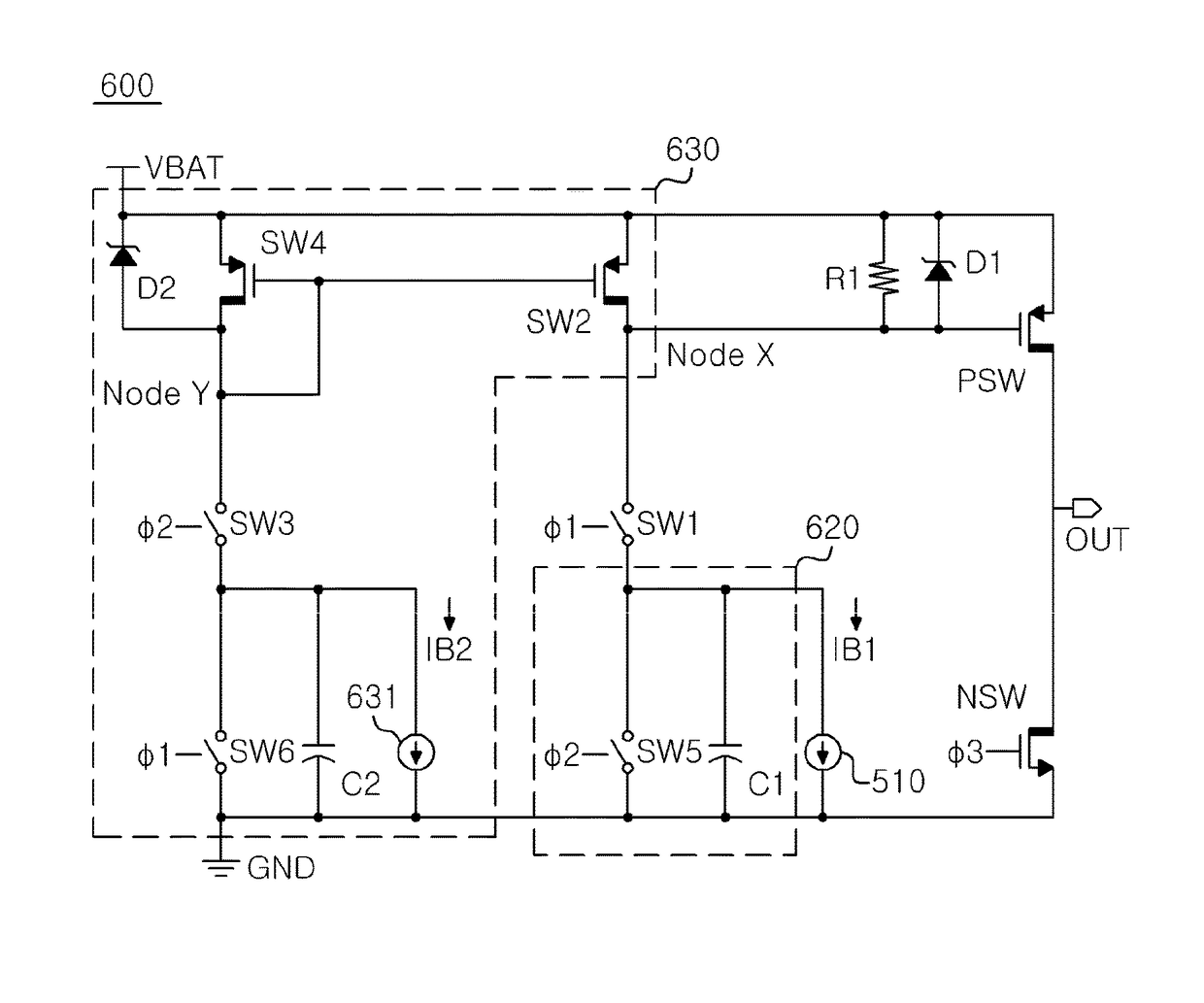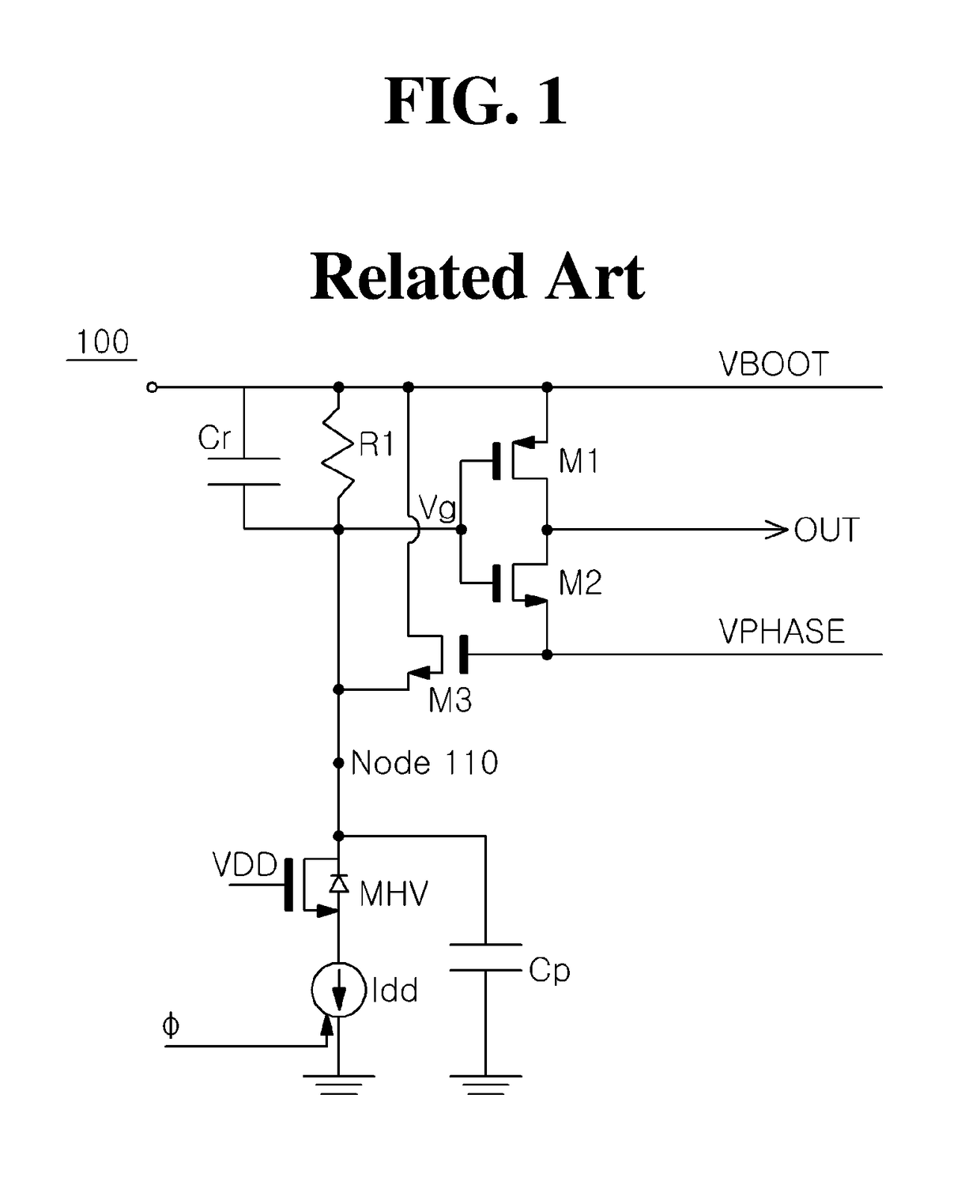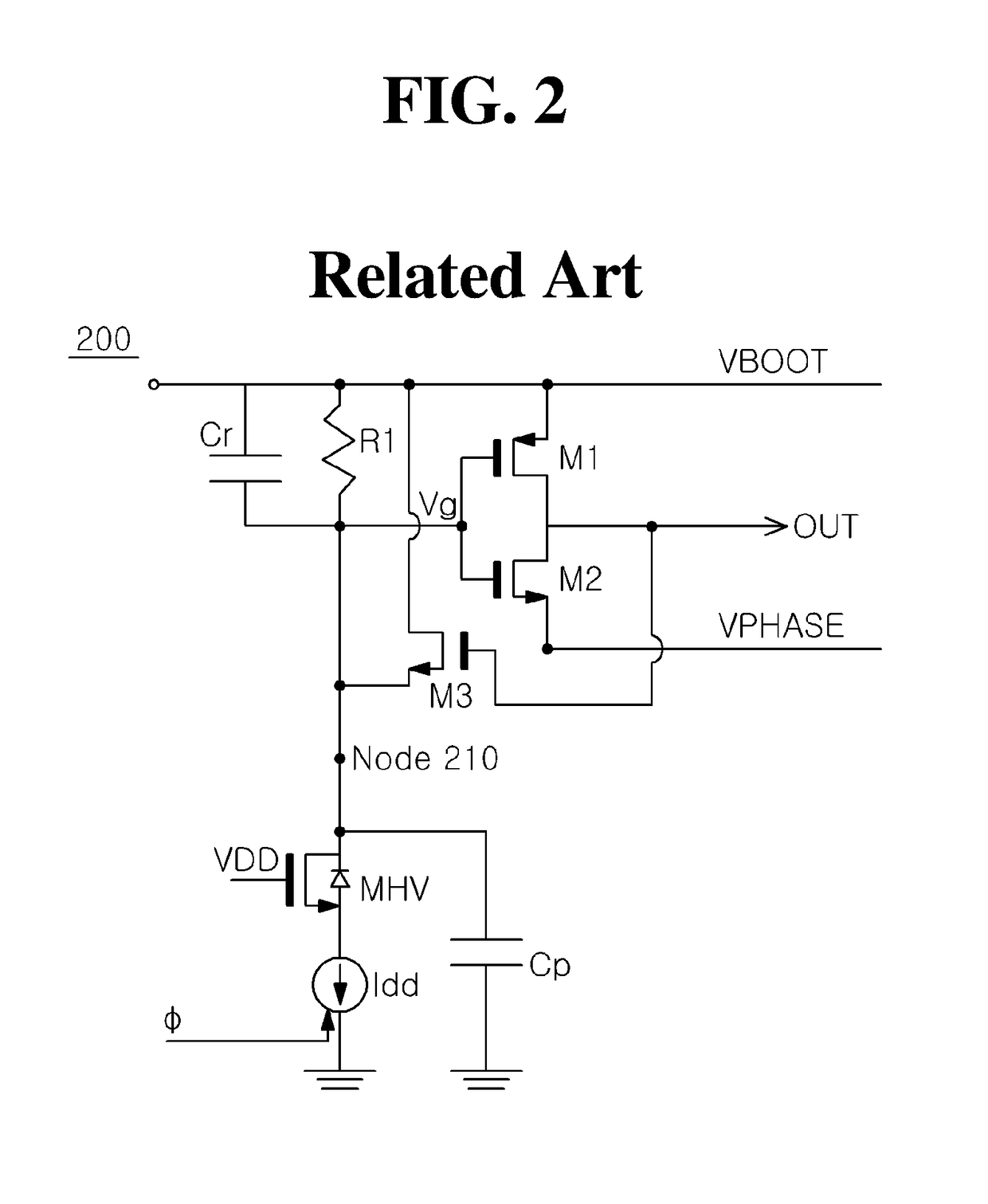Level shifter circuit with improved time response and control method thereof
a level shifter and time response technology, applied in logic circuits, pulse automatic control, pulse technique, etc., can solve the problems of slow operation, rc delay, and difficulty in increasing the gate-source voltage to a level of tens of volts
- Summary
- Abstract
- Description
- Claims
- Application Information
AI Technical Summary
Benefits of technology
Problems solved by technology
Method used
Image
Examples
Embodiment Construction
[0066]Embodiments of the present invention will be described in detail with reference to the accompanying drawings. In the following description of the present invention, detailed descriptions of related well-known components or functions that may unnecessarily make the gist of the present invention obscure will be omitted.
[0067]The prevent invention is not limited to the embodiments. Throughout the accompanying drawings, the same reference symbols are assigned to the same components.
[0068]FIG. 3 is a diagram showing a portion 300 of a pass switch circuit according to an embodiment of the present invention.
[0069]Referring to FIG. 3, a first pass switch PSW configured to transfer the voltage level of an input node A to an output node B is shown. Although a P-type pass switch is shown as the first pass switch in FIG. 3, the idea of the present invention is not limited thereto. The first pass switch PSW is an element configured to transfer the voltage level of the input node A to the o...
PUM
 Login to View More
Login to View More Abstract
Description
Claims
Application Information
 Login to View More
Login to View More - R&D
- Intellectual Property
- Life Sciences
- Materials
- Tech Scout
- Unparalleled Data Quality
- Higher Quality Content
- 60% Fewer Hallucinations
Browse by: Latest US Patents, China's latest patents, Technical Efficacy Thesaurus, Application Domain, Technology Topic, Popular Technical Reports.
© 2025 PatSnap. All rights reserved.Legal|Privacy policy|Modern Slavery Act Transparency Statement|Sitemap|About US| Contact US: help@patsnap.com



